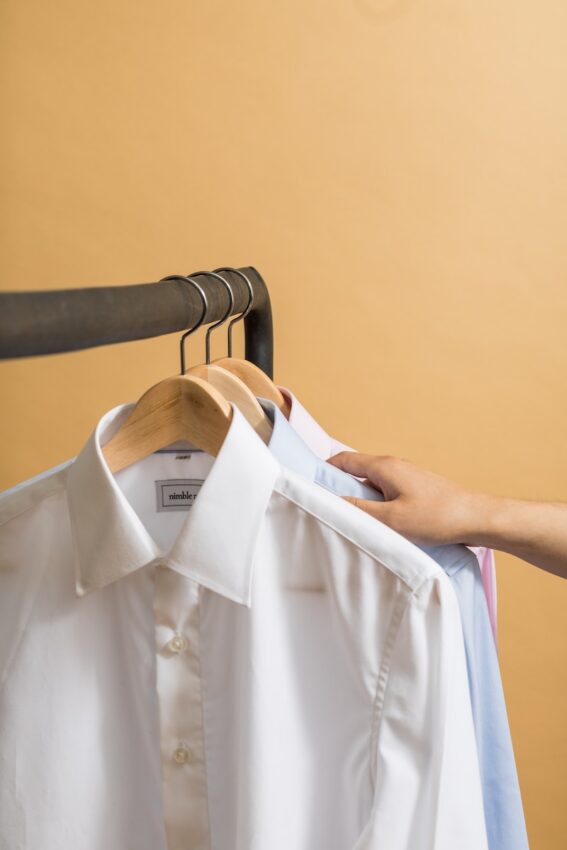In the ever-evolving world of fashion, trends may come and go, but one thing remains constant – the importance of men’s shirts. These seemingly simple garments have been a staple in men’s wardrobes for centuries, and their significance extends far beyond mere attire. From making a lasting first impression to expressing personal style, men’s shirts have become an integral part of the fashion industry. In this article, we will delve into the historical and cultural significance of men’s shirts, explore the various styles and fabrics available, and uncover the secrets to achieving that dapper and stylish look that will make heads turn. So, whether you’re a fashion enthusiast or simply looking to upgrade your wardrobe, join us as we dive into the fascinating world of men’s shirts and discover how they truly shape how we dress to impress.
Understanding the Anatomy of Men’s Shirts: Collars, Cuffs and More
Understanding the anatomy of shirts for men is essential for anyone looking to make a lasting impression and express their style. The shirt’s collar is the most noticeable feature and can greatly impact the look. From the classic spread collar to the more modern button-down collar, there are various styles, each with associations and connotations. Additionally, the type of cuff on a shirt can make a difference. A French cuff exudes sophistication and class, while a barrel cuff offers a more casual and relaxed vibe. By understanding the nuances of collar and cuff styles, one can master the art of dressing to impress.
Beyond collars and cuffs, men’s shirts have many other elements to consider. The fabric choice can greatly impact the comfort and overall aesthetic of the garment. Breathable and lightweight fabrics like cotton and linen are ideal for warmer months, while heavier materials like flannel or twill are better suited for colder seasons. Additionally, plackets, buttons, and pocket styles can add unique touches to a shirt. By understanding the anatomy of men’s shirts, individuals can curate a fashionable and functional wardrobe, allowing them to exude style and confidence in any setting effortlessly.
Selecting the Right Shirt: Colour Pattern and Occasion
When selecting the right shirt, there are a few key factors: colour, pattern, and occasion. A shirt’s colour can greatly impact an outfit’s look and feel. It is generally best to stick to classic colours such as white, light blue, or pale pink for formal occasions like weddings or business meetings. These colours convey a sense of professionalism and elegance. However, bolder colours such as navy, black, or bright hues can be a great choice for more casual events or expressing personal style.
In addition to colour, the pattern of a shirt can also play a significant role in its overall aesthetic. Stripes, checks, or floral patterns can add interest and personality to a shirt. Choosing a pattern that complements the wearer’s body type and personal style is important. For example, horizontal stripes can create the illusion of width for those with slender frames, while vertical stripes can elongate the body’s appearance. The pattern should be chosen based on personal preference and the desired look.
Lastly, the occasion should also be considered when selecting a shirt. A crisp, well-tailored dress shirt is usually the best choice for formal events. However, for more relaxed occasions, such as a casual outing with friends or a weekend brunch, a more relaxed shirt, such as a polo shirt or a button-down collar shirt, can be appropriate. Dressing appropriately for the occasion is important to ensure comfort and confidence.
Overall, selecting the right shirt involves considering the colour, pattern, and occasion. Considering these factors, one can achieve a stylish and appropriate look that will impress.
The Future of Men’s Shirts: Sustainability and Innovation
The future of men’s shirts lies in a combination of sustainability and innovation. As the world becomes more conscious of the fashion industry’s environmental impact, sustainable practices are becoming crucial to clothing production. This includes using eco-friendly materials, implementing ethical manufacturing processes, and reducing waste. Additionally, innovation drives the development of new fabrics, technologies, and designs that make shirts more comfortable, durable, and versatile.
One major aspect of sustainability in men’s shirt production is using organic, recycled, or biodegradable materials. Brands are increasingly sourcing fabrics made from sustainable resources such as bamboo, hemp, or organic cotton, which require less water, pesticides, and chemical processing. Additionally, innovations in textile manufacturing have led to the development of recycled or upcycled materials, reducing the reliance on virgin resources. Shirtmakers can contribute to a more sustainable fashion industry by incorporating these materials into their designs.
In terms of innovation, technological advancements are revolutionising the design and functionality of men’s shirts. From wrinkle-resistant and moisture-wicking fabrics to smart textiles that can monitor vital signs or adjust temperature, there is an increasing demand for shirts with enhanced features. Furthermore, the rise of customisation options, such as made-to-measure services or 3D body scanning technology, allows for a personalised and tailored fit. This combination of sustainability and innovation will shape the future of men’s shirts, creating garments that look good and contribute to a more eco-conscious and technology-driven world.




